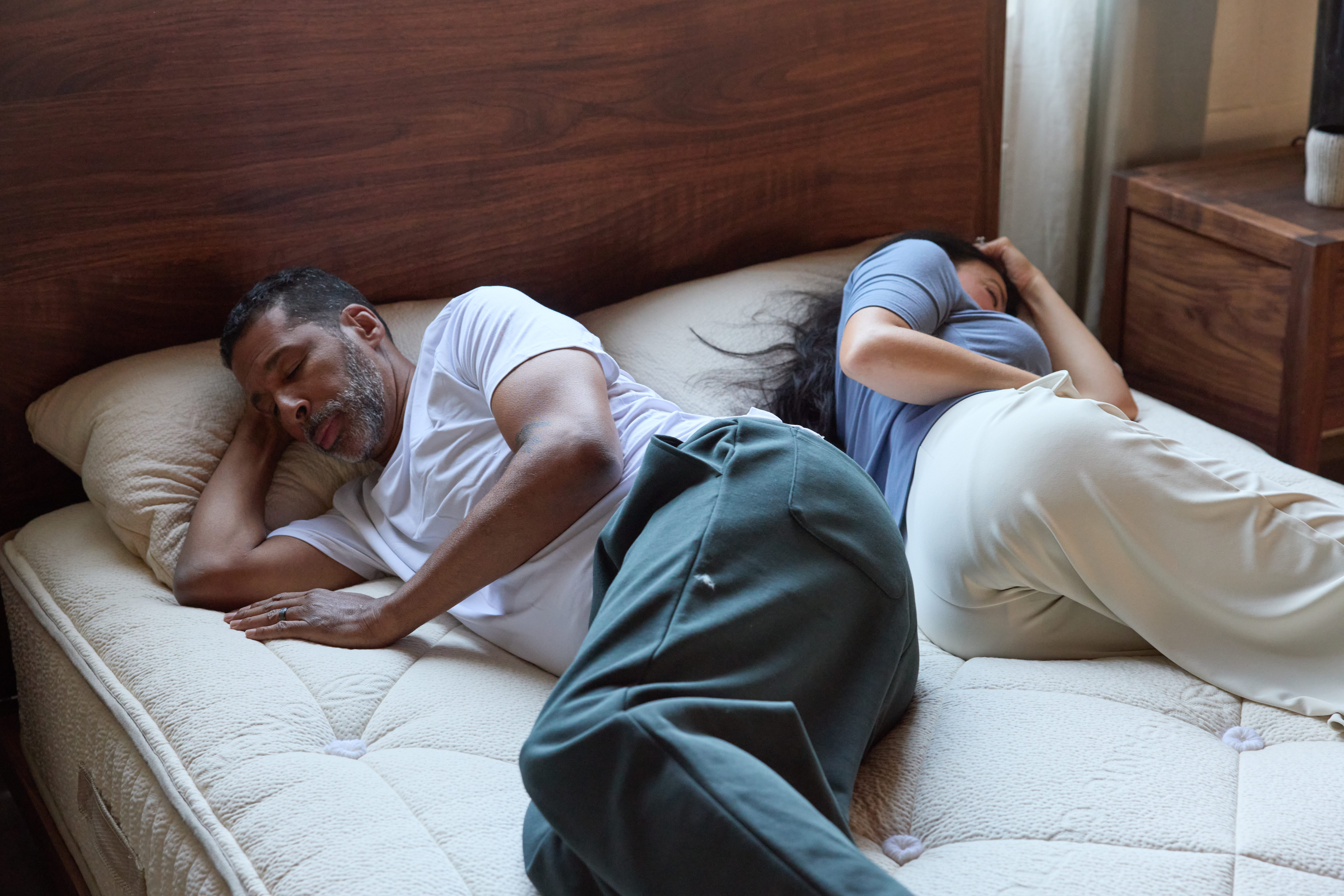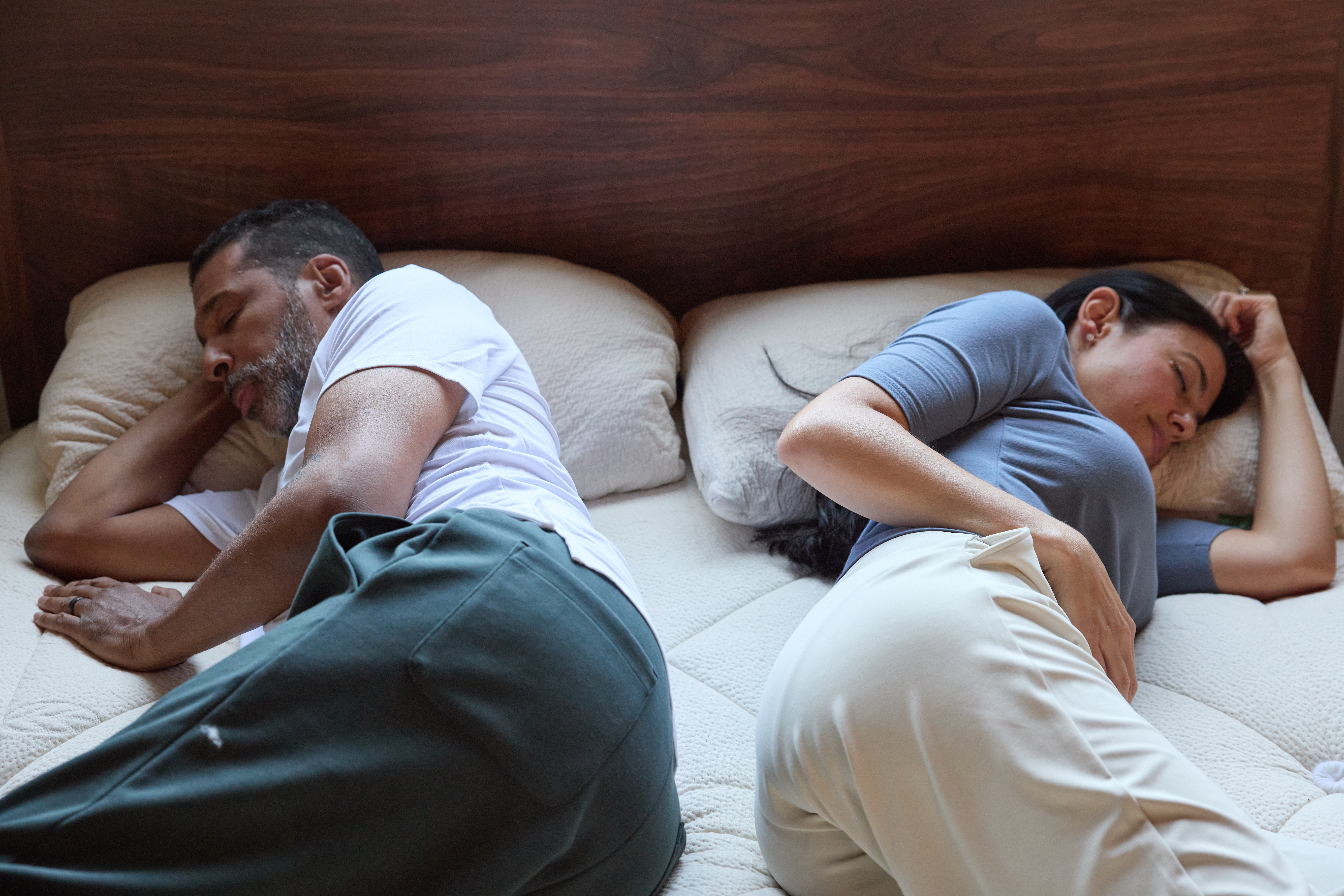Sleeping on your side has its perks, but it can also be a real pain in the shoulder. Here’s how to heal it and keep it from coming back.
Of the three main sleeping positions — side, back, and stomach — side sleeping is the most common for adults. It’s the position my body naturally settles into each night, even when I attempt to sleep on my back. Side sleeping can help reduce lower back pain, improve digestion, and alleviate issues such as heartburn and bloating. It’s also beneficial for people who snore, are pregnant, or are dealing with sleep apnea.
But as comfortable as side sleeping is, it can put extra pressure on your shoulder if you sleep on it wrong. I used to brush off my shoulder pain as “just a little morning soreness.” Then it started bothering me throughout the day, sometimes even radiating down my arm. Simple activities like working at my desk or relaxing on my couch started to feel uncomfortable.
Are you suffering from this too? Here’s how to adjust your sleep setup and minimize daily strain, as well as a few stretches to relieve pain and protect your shoulders.

Read More: Mattress Firmness Decoded: What’s Right for Your Sleep Style?
How side sleeping causes shoulder pain
When you sleep on your side, your body weight can compress the shoulder joint and pinch the tendons inside, leading to a condition known as shoulder impingement. The pressure can cause:
- Pain and weakness when reaching forward, to the side, or behind your back
- Difficulty lifting objects overhead
- Sharp pain on the top of the shoulder
If left untreated, the tendons can wear down, causing more serious conditions such as tendonitis, bursitis, or a rotator cuff tear.
Supportive sleep postures for healing
Bob Schrupp and Brad Heinick, physical therapists known for their free Bob & Brad pain-relief programs, emphasize three main goals for healing shoulder pain: posture correction, eliminating pain-makers, and strengthening the shoulder.
Let’s start with how to sleep in a way that takes the stress off your shoulder joint.
1. Sleep on your non-painful side. If your right shoulder hurts, try sleeping on your left, and vice versa. Use one or two pillows to prop up your painful arm in front of your body, keeping it elevated and in a neutral position. Avoid letting the sore arm hang downward toward your chest. You can also lay your arm on your body, but it usually works better with the aid of pillows.
2. Sleep on your back. Place a small pillow under the armpit of your painful arm. The support prevents it from drooping downward and helps reduce pressure on the shoulder joint. You can also use this setup to elevate your arm to a neutral position while sitting or resting during the day.
3. Sleep on your painful shoulder, but with a pillow “canal.” If you can’t break the habit of sleeping on your sore side, at least give yourself better support. Use pillows to create a gap (or canal) between your head pillow and a torso pillow placed beneath you. Let your arm rest in the space between — this will reduce pressure on the ball-and-socket joint. You can also roll slightly onto your back to take more weight off your shoulder.
Also, avoid sleeping on your stomach. As tempting as it might be, there’s no good spot to put your arms. The awkward positioning only adds stress on your joints.
Read more: Optimize Your Sleep: Choosing the Right Pillow for Comfort and Support
Eliminate pain-makers
First, test your current bed setup. A medium-to-firm mattress that cushions the pressure points of your hips and shoulders, without letting your midsection sink too much, is ideal for side sleepers. Then, a firmer, higher-lift pillow for your head can fill the space between your shoulder and head so that less pressure shifts to your shoulders. Adding a mini pillow between your knees will also keep your spine aligned by minimizing movement while you sleep.
A supportive sleep position and foundation are a great start, but how you move throughout the day matters too. These common habits can aggravate shoulder pain:
- Poor posture: Slouching or not having proper back or arm support can strain your shoulders. Use a pillow behind your lower back and under your arm when sitting to support your posture. Or, if you tend to hunch over and lean on the same elbow, switch to the other side.
- Awkward movements: Reaching into the backseat of your car or twisting your arm in odd ways can cause irritation.
- Repetitive use: Activities such as painting, pruning, knitting, or long drives can wear on your joints. Remember to take breaks to stretch and rest.
- One-sided pressure: Always carrying a bag on the same shoulder can overstretch muscles. Try alternating sides.

Read more: Mindful Moves for Better Desk Posture
At-home shoulder relief exercises
Before visiting a doctor or accepting shoulder pain as something you just have to live with, try a few stretches and strength-building exercises to relieve and prevent pain.
Postural correction exercises
Scapular Retraction
Raise your arms in a “W” shape or place your hands behind your head. Take a deep breath in and squeeze your shoulder blades together. Hold briefly, then release. Do 5–10 reps, 6–8 times spread throughout each day.
Posture Ball Release
Place a tennis or lacrosse ball in a sock. Lie on the floor or stand against a wall, positioning the ball between your shoulder blade and spine. Gently lean or roll into tight spots for about 5 minutes once a day.
Stretching exercises
In addition to the posture exercises, do these stretching exercises 6–8 times throughout each day. A good sign that they are working is that your shoulder pain will centralize, or become more focused on a smaller section. If the exercises cause more pain, stop and use ice while in a neutral position to calm the inflammation.
Progressive Statue of Liberty
Sit or stand with a broomstick, pole, or similar object anchored to the floor or against your chair. Grip the stick with your painful side hand at a comfortable height. Lean forward while pressing down into the stick. Repeat for up to 10 reps.
Shoulder Extensions
Sit or stand with your stick or pole. Grab the front end of the pole with your non-painful arm, palm facing out, and grab the back end of the pole with your painful arm, palm facing in. Gently push the stick forward with your non-painful arm and extend the painful shoulder arm backward. Repeat for up to 10 reps.
Strengthening exercises
Once your shoulder is feeling better, move on to strengthening the muscles on the affected side(s), 2–3 times a week. Begin with no weight, and if it feels good, gradually work up to light weights up to 5 lbs.
Side Lying Abduction
Lie on your side with your arm resting across your body. Lift it about 45 degrees, then lower. Do one set of 10–20 reps.
Side Lying External Rotation
Start in the same side-lying position, but bend your elbow to 90 degrees so your hand rests in front of your stomach. Keeping your upper arm tucked to your side, rotate your hand upward toward the ceiling. If it hurts, stop or reduce the range of motion. Do one set of 10–20 reps.
Lift Off
Stand and place the back of one hand on the small of your back. If that’s too hard, rest it on your upper buttock. Gently lift your hand straight off your back (not up, down, or side to side). Only go as far as is comfortable. Do one set of 10–20 reps.
If your shoulder pain lasts for more than two weeks, limits your mobility, or starts radiating down your arm — even after you’ve improved your sleep posture and practiced these exercises — it’s worth checking in with a doctor. The sooner you address it, the sooner you’ll be able to heal, sleep better, and wake up pain-free.

Read More: Unwind with These Bedtime Yoga Stretches for Better Sleep
Have feedback on our story? Email [email protected] to let us know what you think!

Shop Pillows
The Essential Organic Pillow Collection
Gentle, breathable, non-toxic support.







